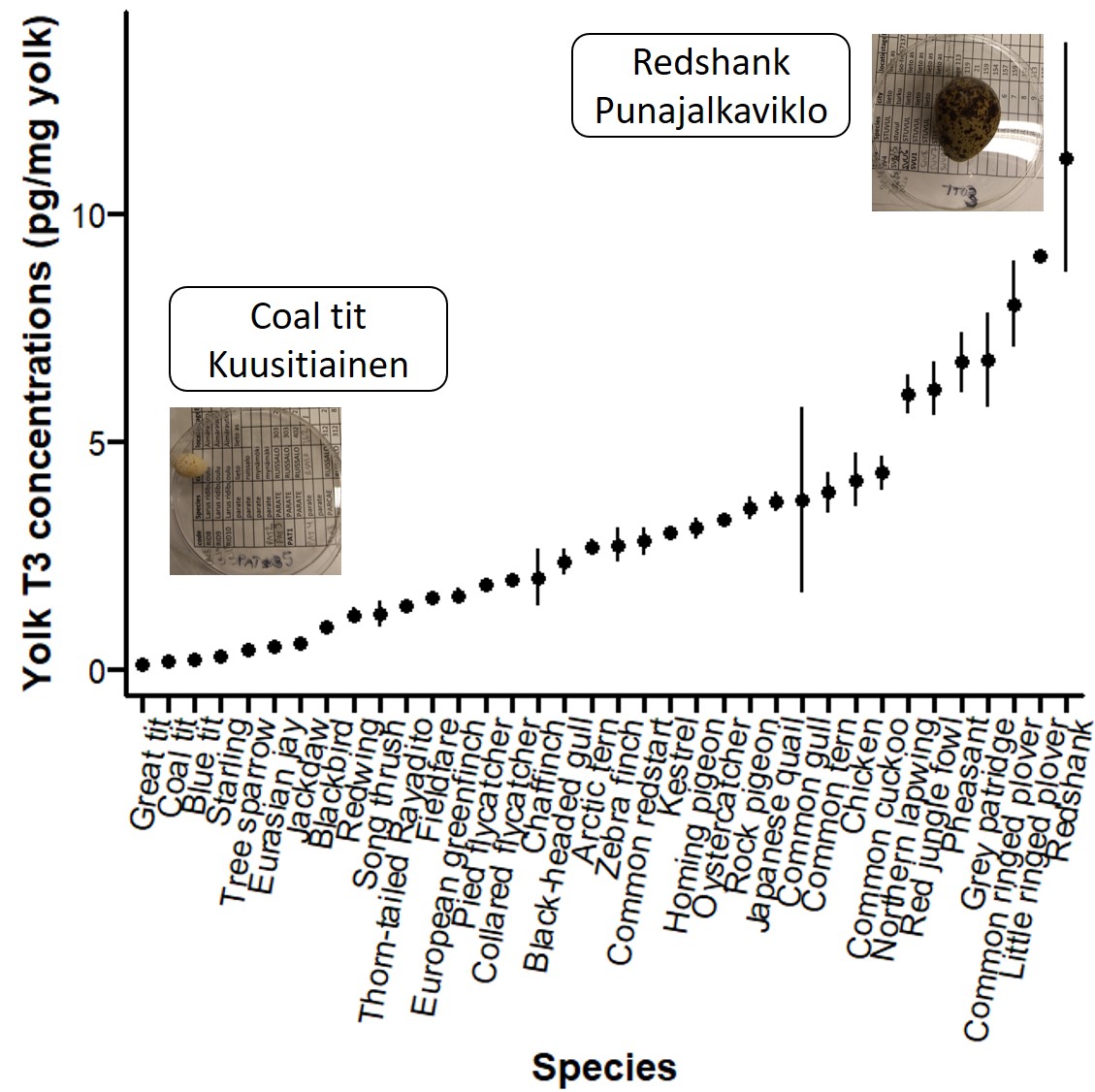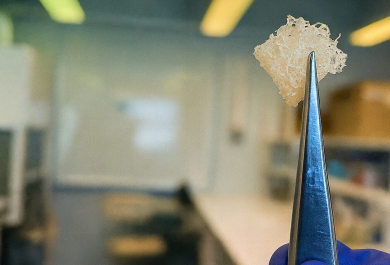In all vertebrates, mothers transfer variable amounts of hormones into eggs and embryos, which influence development and traits of offspring in later lives. In a recent study the researchers looked at the transferred hormones in different bird species eggs, and found a hundredfold difference in the thyroid hormones, which control development and growth in birds. Migratory and precocial bird species provide the highest levels of thyroid hormones to their offspring.
In humans and other mammals, a healthy level of thyroid hormones in mothers during pregnancy is a prerequisite to deliver a healthy baby. In birds, maternal hormones are stored in the egg yolk, from where the hormones can influence embryonic development.
Despite the importance of thyroid hormones in embryonic development, we know very little about whether different species put different amounts of hormones in eggs and what would determine the differences across species.
Via an international collaboration, the lead researchers, senior research fellow Bin-Yan Hsu from the Department of Biology, and Suvi Ruuskanen, adjunct professor at the University of Turku and assistant professor at the University of Jyväskylä, obtained samples of egg yolks from 34 species of birds, from shorebirds to passerines, to assess the variation in yolk thyroid hormones across species.
– Our results showed an astounding hundredfold difference in thyroid hormones in egg yolks across species, lowest levels in the great tits and highest in shorebirds, says Dr. Suvi Ruuskanen.
Ruuskanen.

Thyroid hormone level is connected to the life histories of different bird species
As bird species have very different life histories, such as developmental speed, number of breeding attempts and longevity, the researchers compiled a data set of selected life-history traits across the 34 species and analyzed their relationships with yolk thyroid hormones.
The analyses suggested that migratory birds transferred higher concentrations and larger total amounts of thyroid hormones in eggs than those species that do not migrate.
– This could be related to a well-known fact in biology that migration is under the control of thyroid hormones. Because of this, migratory birds have higher levels of thyroid hormones in their blood, and the hormones are passed into eggs during reproduction, says Dr. Hsu.
Moreover, the researchers also showed that birds with precocial development transferred larger total amounts of thyroid hormones in eggs than birds with altricial development. Generally speaking, how birds develop can be roughly categorized as either precocial or altricial. Chickens are a precocial bird. Their chicks can walk around soon after hatching with their yellow, fluffy downy feathers to keep them warm. In contrast, altricial birds, like tits and sparrows, emerge out of the eggs naked and vulnerable, with their eyes closed.
– This distinct contrast in development is already known to be related to the development of the thyroid gland. Whether the differences in developmental mode causes the differences in yolk hormones, or the larger amounts of THs in the eggs make the precocial development possible, is one thing I will try to understand in the future, says Dr. Hsu, the lead author of the paper.
Photo of the Redshank: Frans Vandewalle (CC BY-NC 2.0)





